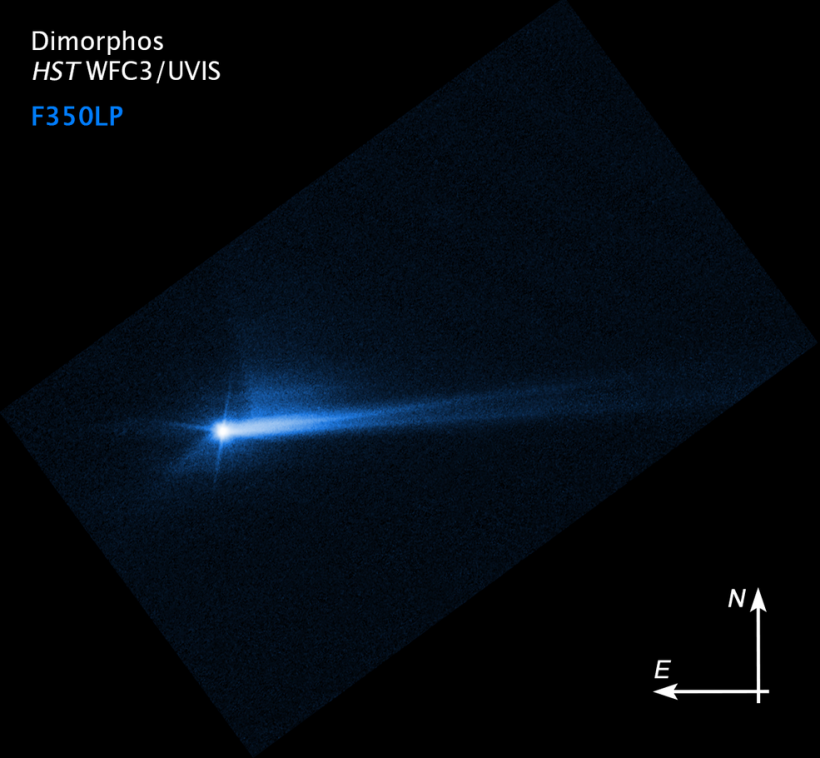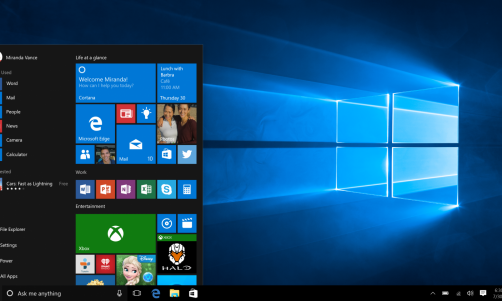Earth now has a capable defense system against Asteroids that could impact Earth in the future without needing Bruce Willis and a drilling team.
NASA's Double Asteroid Redirection Test (DART) mission successfully diverted and changed the trajectory of the Dimorphos asteroid forever on Sept. 26, showcasing the capabilities of the space agency's DART spacecraft in the process.
NASA previously launched its DART mission and spacecraft in November 2021, with the latter smashing into the Dimorphos asteroid on Sept. 26, per the New York Times.
NASA DART Mission Success Details

This imagery from NASA’s Hubble Space Telescope from Oct. 8, 2022, shows the debris blasted from the surface of Dimorphos 285 hours after the asteroid was intentionally impacted by NASA’s DART spacecraft on Sept. 26. The shape of that tail has changed over time. Scientists are continuing to study this material and how it moves in space, in order to better understand the asteroid.
NASA Mentioned in an announcement that the kinetic impact of its DART spacecraft with the Dimorphos asteroid was able to alter its orbit around its partner asteroid, Didymos.
The success of NASA's DART mission marks the first time humanity has ever been successful in changing the trajectory of a celestial object and the first full-scale demonstration of asteroid deflection technology.
Based on the report of NASA's DART investigative team, the DART spacecraft was able to alter Dimorphos' orbit around Didymos by 32 minutes - a significant trajectory change from the previously expected 73-second-change. As a result, Dimorphos now takes 11 hours and 23 minutes to orbit Didymos.
The asteroid previously took 11 hours and 55 minutes to complete a revolution around Didymos.
NASA Administrator Bill nelson mentioned that the mission's success shows that the space agency is doing its best to prepare for whatever the universe throws at Humanity and Earth. It also showed that NASA is serious about becoming the planet's defender.
Read More: One of Iran's State TV Channels Was Briefly Hacked
"All of us have a responsibility to protect our home planet. After all, it's the only one we have," Nelson added. "[DART's success] is a watershed moment for planetary defense and all of humanity, demonstrating commitment from NASA's exceptional team and partners from arount he world."
Unfortunately, it is currently unknown whether NASA will still consider Dimorphos and Didymos as near-Earth objects after its DART spacecraft's impact on Sept. 26.
The space agency previously stated that Dimoprhos and Didymos are near-Earth asteroids that could come as close as 0.048AU from our home planet.
NASA mentioned that one AU is equal to 150 million kilometers - the distance of the Earth to the Sun. With them being that close to Earth, they have a good chance of impacting Earth if left on its original trajectory in space.
What's Next For NASA's DART Mission?
Space.com mentioned in its report that observations on the asteroid pair will continue into 2023 and that the European Space Agency will launch a follow-up spacecraft, Hera, to explore them.
The space agency hopes that Hera will give a better look at Dimorphos and Didymos than the DART spacecraft, along with the effects the latter spacecraft made.
You may remember that experts at the University of Bern and the National Center of Competence in Research were worried that the DART spacecraft could deform Dimorphos instead of leaving a crater.
Additionally, NASA said it would focus on measuring the efficiency of the DART spacecraft's momentum transfer from its 14,000mph collision with Dimorphos.
Related Article: NASA's DART Mission Expected to Smash Into Asteroid on September 26














